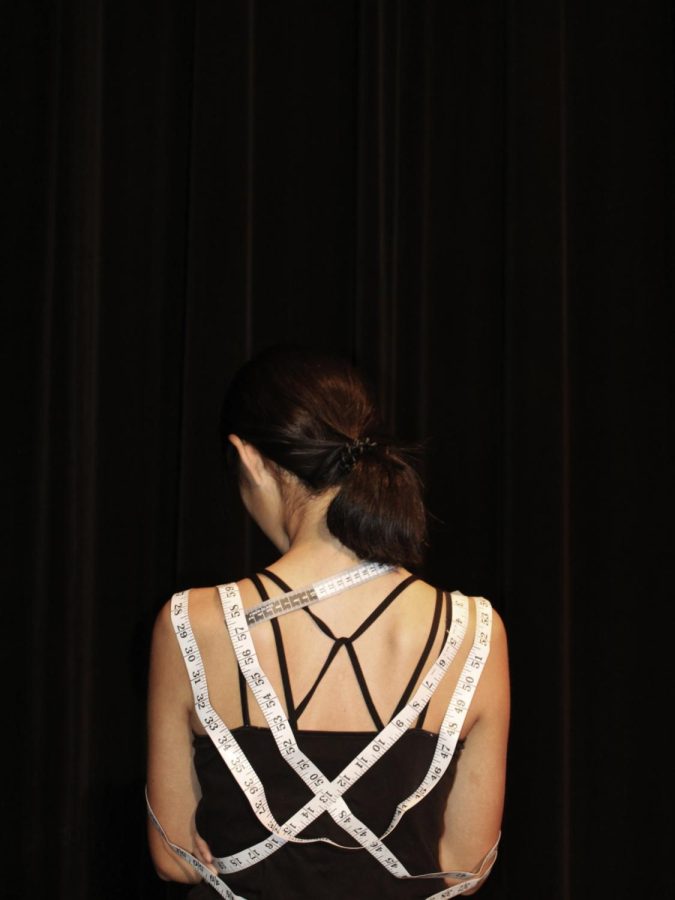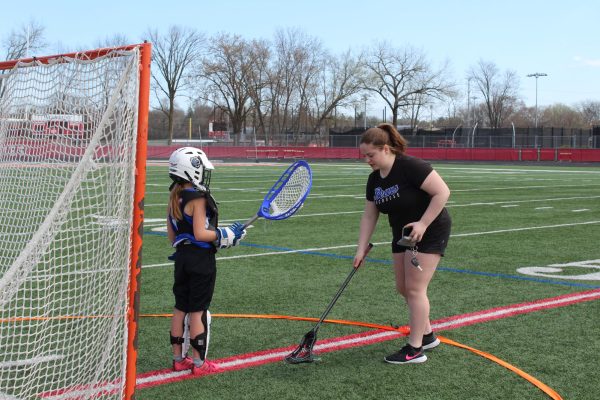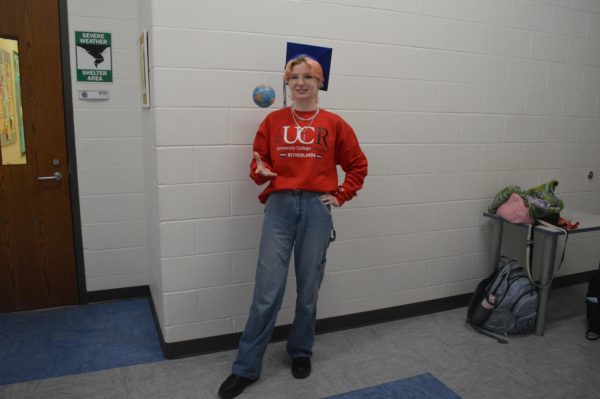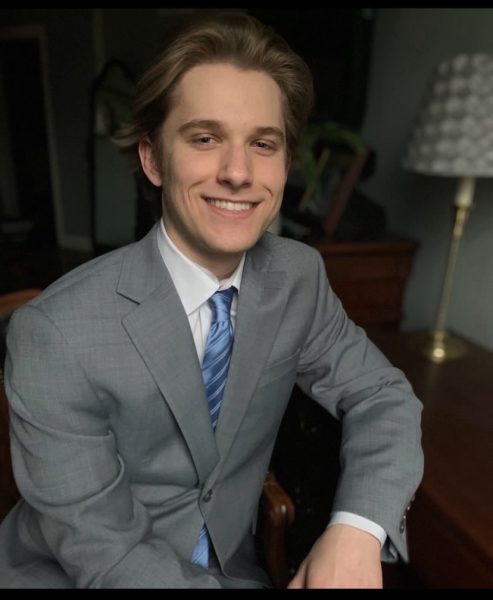An immeasurable standard
Dissecting the modern metrics of appearances
The tailored ideal
Last fall, the Wall Street Journal published the Facebook Files, an internal document leak from the company previously known as Facebook, now known as Meta. These documents showed that Meta was aware of harmful effects from its platforms, such as Instagram. Meta did their own research for years uncovering how Instagram affects its young users. In the files, the company found it was notably most harmful to teenage girls.
According to the Wall Street Journal, “Facebook has consistently played down the app’s negative effects, including in comments to Congress, and hasn’t made its research public or available to academics or lawmakers who have asked for it.” The findings of this research have managed to show themselves at LZHS with many students, such as Kyra Keena, junior.
“I started noticing how I looked when I was maybe in fifth grade, and then it really sparked in sixth grade when I first got Instagram. It was like, one moment, it’s great and you think it’s perfect and everything’s fine, and the next minute you are obsessively scrolling through people you don’t look like but you wish you did. For me that kind of took it to the next level. I started comparing myself to anyone and everyone,” Keena said.
Isabel Lin, sophomore, says that there is a stigma to look a certain way that with social media has become “especially present.”
Research published by the student enrichment non-profit, International Socioeconomics Laboratory, says that Western beauty standards are dictated by Eurocentrism, the “tendency to interpret the world in terms of European or Anglo-American values and experiences,” according to the Merriam-Webster Dictionary
As a result, students of color who attend schools with predominantly white populations may feel pressured to conform to beauty standards contradictory to their own culture’s and non-inclusive of their features. With 78.8% of LZHS students being white, according to the 2020-2021 Illinois Report Card, Ann Lustig, school counselor and licensed therapist, says that this lack of diversity in students’ surroundings can prove difficult.
“Beauty standards are also ingrained in culture. If we see a lot of white influencers, we’re not getting any other culture […]. We’re not getting more diverse opportunities. I think people of a minority group are expected to, conform is not the right word, but to meet the beauty standards of a culture that’s not theirs,” Lustig said. “They’re [being asked] to put on shoes that don’t belong to them. They’re [being asked] to meet a standard that isn’t theirs and that’s not fair.”
Some students of color, such as Lin, claim to have difficulties balancing two different cultures and their expectations, bringing along its own unique sets of “frustrations” for her that she says her white counterparts do not face.
Disparities in experiences with body image are not just between different racial groups, they can also exist between stratification of gender. For example, some students believe that there is more of a stigma associated with males talking about personal experiences, such as John, whose name has been removed for anonymity.
“Guys are not gonna want to talk about this. There’s a reason I’m going to be anonymous. It’s because I don’t really want people to know that I think about these things, that I feel this way about myself. I know deep down [that] everybody feels this way about themselves. Right? Everybody wants to look better [and] all that stuff, but if you talk about it, [boys] are seen as weak,” John said.
However, although Chloe, senior, whose last name has been removed for anonymity, does not deny that boys have conflict over self-image and own experiences, she believes that pressures to “fit the mold” are “more relaxed” for boys than girls. She says that this stems from the prevalence the media has in girls’ lives, even from a young age.
“Since I was young [watching] Disney, all I would see were dainty, or in other words small, women and teenagers. I would see that in TV and movies [that] those kinds of girls would always be the ones that the guys were into,” Chloe said. “There [are] also jokes that have been in old Disney shows about eating less calories and about losing weight. Although I don’t remember all of it, it was still in those shows. It still was rooted in something that I shouldn’t have had to hear or witness from such a young age.”
Chloe is not the only student who had issues regarding self-image stem from a young age. According to a Bear Facts survey of 302 students, 20.8% said that they were 5-10 years old when their “[body image] struggles” began.
Due to the inherence of beauty standards in society, and how they force themselves into minds at a young age, they can cause unconscious biases that people carry with them. Students like Chloe say these biases control how people are treated.
“I think that society does in fact treat people differently according to beauty standards. If one girl in your high school were to act a certain way, maybe have certain beliefs or act ‘weird’ or something like that, [then] they would be treated differently and be viewed a lot better and get a lot better feedback than a person who has a little more weight, or a person who isn’t as popular as the rest because of the way they look,” Chloe said.
Lustig shares similar sentiments, saying that “it’s an ebb and flow” because “we all just want to be accepted.” This desire for acceptance becomes an “affirmation thing,” Keena says.
“It’s an affirmation thing, meaning [that] they don’t get it from somewhere else, so they need to get it somewhere,” Keena said. “If they can get approval from anywhere in an area that matters to them, and fitting in is a natural desire for everyone, something that every human being needs is relationships with other people, then they’ll do what they think they need to do to get it from there. Obviously society has standards, and it hurts when you can’t meet these unattainable standards.”
Trying to measure up
The pressures of beauty standards have repercussions, and contribute to a multitude of adolescent mental health crises. As of 2017, 13% of U.S. teens ages 12 to 17 (or 3.2 million) said they had experienced at least one major depressive episode in the past year, up from 8% (or 2 million) in 2007, according to the Pew Research Center.
The toll that a negative self-image can have on someone is significant because it affects the foundation of people’s self confidence, according to Lustig, who feels “when people don’t have a foundation of confidence, everything else falls apart.”
Caiden, sophomore, whose last name has been removed for anonymity, agrees that negative self-image has a significant toll on mental health and can carry on into the adolescent social scene.
“It will be like every time [someone is] looking at me, ‘Oh, that person doesn’t like this about me. Is there something wrong with me or is it just their personal opinion?’” Caiden said. “Usually it’s not logical. It’s usually like, ‘I don’t like this [about] myself because they don’t like [this about me].’”
Caiden says that the idea of people talking about other people’s bodies is “stressful [and] uncomfortable” to deal with in social settings, and these notions can worsen mental health.
“It’s definitely mentally draining,” Caiden said. “My issues get worse when I’m in school because I know when I’m going to see more people more opinions are going to be brought upon me.”
Similarly, Chloe says expectations to adhere to the beauty standard have become ingrained in her mind and make their way into her daily headspace.
From a young age, Chloe felt pressure to be ‘healthier.’ While she says that she recognizes some advice might have been said with good intentions, hearing recurring comments on her eating made her feel worse about herself.
“Even though things said were by someone who does not come to my school, someone who’s much much older than me, it plays into students at my school because it’s someone so close to me,” Chloe said. “It’s like, if [someone so close to me is] thinking those things and making me feel those things, then kids my age must be thinking them as well.”
The impact of external pressure to maintain a certain diet had a permeating effect on Chloe, who says she sometimes feels like she “take[s] up too much space” and that she still thinks about what “point-value” specific foods have and how many points she has left for the rest of the day.
For Keena, she says that in terms of what you go through mentally, it’s “almost a competitive thing.” This mindset can turn harmful when both external pressures and a hyper-awareness of others becomes tied to body image.
“A lot of what you go through is ‘Well what if that girl is skinnier than me? What if everybody else thinks that person looks better than me?’” Keena said. “Even if somebody would say, ‘Why are you comparing yourself to her? She’s not as pretty as you,’ that was still playing into it because I thought that she was, and obviously that’s a stupid thing to say altogether because beauty is subjective.”
At least once a week, Lustig says she has conversations with students about comparisons made regarding self-image where she tells them to tell their “internal voices” they are fine the as they are.
In efforts students make to avoid immersing themselves in destructive mindsets, sometimes recognizing the origins of negative thinking can help re-address critically evaluative self-worth.
“It’s like this analogy where if my neighbor was growing a beautiful bush of roses, I had peonies, and my other neighbor had wildflowers,” Keena said. “Now, the roses, they’re stunning. They’re the symbol of love, right? My peonies, they’re cute, they’re ditzy. My [other] neighbor’s wildflowers are out of control and full of color. I wouldn’t compare my garden to somebody else’s, because each plant and each flower has its own beauty and its own purpose. You don’t necessarily compare two different things as if one is better than the other, and you shouldn’t do the same thing to yourself.”
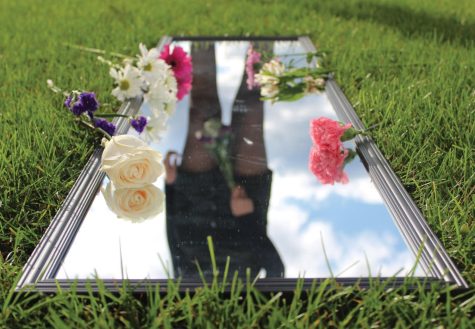
Cutting the tape
Self acceptance is an individual’s acceptance of all their attributes, according to the Virginia Department of Health. Even though this is difficult due to societal pressure and media exposure, self-acceptance is not impossible. Some students at LZHS are working on coming to terms with their body, and others have already overcome it.
Lin says she did not like that she felt too skinny and that her clothes did not fit her how she wanted them to. As a result, Lin felt pressured to work out to gain more weight and muscle. However, at a certain point, Lin struggled to understand her motivations behind what she was doing.
“Halfway through, I just didn’t understand why I was doing something that didn’t make me happy just so I can look a certain way for other people,” Lin said. “[Working out] is a lot to be doing. Some say that workouts make them happy, but working out isn’t something that I thoroughly enjoyed doing. I’m healthy and I think [my body is] fine.”
For Keena, who previously was medically diagnosed with anorexia nerviosa, being told that her eating habits could cause her to “end up in a hospital bed” was what it took to snap her out of the unhealthy cycle she had been living in.
“I would never want to put that [experience] on a younger version of me if I was seeing her face to face right now. So why on earth would I be doing that to myself now? One day, there’s gonna be an older version of me who’s saying the same thing about where I am right now,” Keena said.
With the help of nutritionists and many others, she has since recovered and has “gotten help.” The process of finding herself and “[getting her] spark back,” she says, was an incredible feeling.
“I took a break from Instagram for two to three months and I didn’t post,” Keena said. “I stopped surrounding myself with things that encouraged [thinking about my weight] even though I was struggling with it. I tried to focus on things that mattered to me. Things that I have always loved, whether that’s music, art, reading, or journaling. Things that just make you feel like a kid again.”
However, other students showcase that overcoming beauty standards happens at their own pace. For example, Chloe is still undergoing the process of overcoming her body image.
“[Issues with self image] is something that I always will have and it’s because of the people in my life who have pushed me to be ‘healthier.’ [Pushing] never helped like they thought [it] did. I think the fact that I can recognize from such a young age that using Weight Watchers was wrong, and that my eating habits were unhealthy, is how I know that I’ve made progress,” Chloe said.
In order to get past demands to look a certain way, Chloe says having “a good support group” has been important to feeling better about herself.
“The thing that has helped me the most is sharing my experiences with friends and finding people who may have experienced the same thing,” Chloe said. “But I’m lucky to say that I know good people, people who don’t judge me, and people who don’t care about how I look. They like me for me.”
Lin says she agrees that the support others offer can alleviate the frustration created by beauty standards. In order to help others facing similar issues as she did, Lin tries to spread the message that being beautiful does not mean having to change.
“I just wish that more people in those girls or boys’ lives would tell them that they don’t need to change for anyone. It’s frustrating because you feel helpless,” Lin said. “I can relate to feeling like you don’t look the way that people want you to. I just want to be there to comfort them because when I was going through that all, I really needed someone to tell me that I didn’t [need to change]. I want to be that person to them.”
Despite the benefits of having a support group, Keena says that her experiences taught her that “comparison kills joy” and ended up taking severe tolls on her mind and body. It is at points like these where Keena claims it is not always plausible to wait for others to notice and it takes self reflection to realize that what someone else identifies as beauty does not have to be the same for everyone.
“It comes to a point where one day you’re gonna wake up and realize none of [your worries] really [matter] and you’re gonna be appreciated as you are,” Keena said. “One person’s opinion of you, or what you think their view of you [is], will not define you until you can first define yourself.”

Coming back for her last year on Bear Facts, Gurneer will be Spotlight Editor for the second year in a row. Outside of Bear Facts, she participates in...
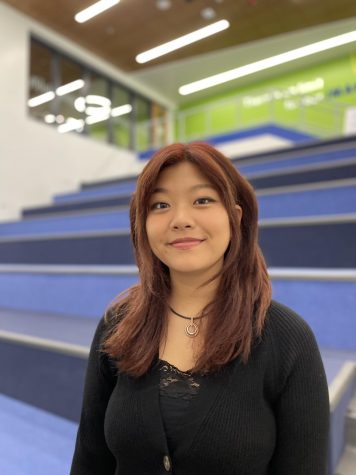
Going into their third year of being on the Bear Facts Staff, Kara hopes to take on Lois Lane-type capers as a senior. If you were to spot them outside...
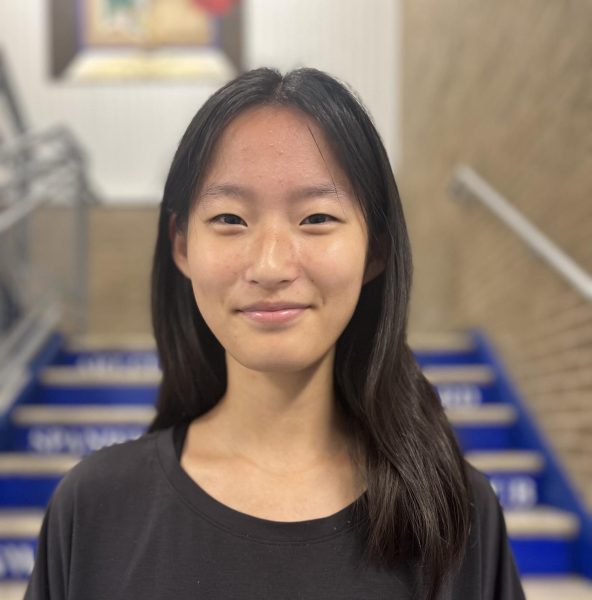
As a junior, this is Grace’s second year on the Bear Facts staff, acting as secretary and Junior Spotlight Editor. In her free time, she enjoys running...

